Resources
2017-18Colloquy for Theological School Deans This colloquy seeks to gather a diverse group of theological school deans to engage in creative conversations about academic leadership in an age of dramatic socio-economic, environmental, demographic, and religious change in the North American context. Colloquy participants can expect to engage in collaborative learning, expand their understanding of the work of academic administration, and build a network of collegial support. Goals As peers in a collegial and confidential atmosphere, we will consider such questions as: How do you discern and affirm your vocation as a theological educator in the role of an academic dean within the mission of your institution? How do academic deans lead in times of dramatic social and religious change that directly and indirectly impact theological education? How do academic deans lead to keep faculties vital, curricula relevant, and teaching and learning the center of the theological school enterprise? Read our Policy on Participation Honorarium and Fellowship Participants will receive an honorarium of $3000 for full participation in the two sessions, plus local expenses and travel. In addition, the Wabash Center will reimburse expenses up to $500 for your attendance at the Association of Theological Schools’ CAOS meeting to be held prior to the ATS biennial in June 2018. Read More about Payment of Participants Participants Front Row: Stephen McMullin (Acadia Divinity College), *Deborah Krause (Eden Theological Seminary), *Luis Rivera (Garrett-Evangelical Theological Seminary), Heather Vacek (Pittsburgh Theological Seminary), Munir Shaikh (Claremont School of Theology). Back Row: Susan Abraham (Pacific School of Religion), Grant Taylor (Beeson Divinity School at Samford University), Melanie Johnson-DeBaufre (Drew Theological School), Jeanne Hoeft (Saint Paul School of Theology), Lynda Robitaille (St. Mark’s College), Valerie Rempel (Fresno Pacific University Biblical Seminary), *Paul Myhre (Wabash Center). *leadership/staff position. APPLICATIONS CLOSED Due January 17, 2017 Colloquy Information Dates First Session: July 17-22, 2017, Wabash College Second Session: April 18-22, 2018, Corpus Christi, Texas Leadership Team Deborah Krause, Eden Theological Seminary Luis Rivera, Garrett-Evangelical Theological Seminary Paul O.Myhre, Wabash Center Important Information flickr Photo Gallery for this Workshop Travel and Accommodations for Summer Sessions at the Wabash Center Travel and Accommodations for Winter Sessions in Texas Philosophy of Workshops Policy on Participation Map of Wabash College Campus Travel Reimbursement Form (pdf) Foreign National Information Form (pdf) Payment of Honorarium For More Information, Please Contact: Paul O.Myhre, Associate Director Wabash Center 301 West Wabash Ave. Crawfordsville, IN 47933 800-655-7117 myhrep@wabash.edu
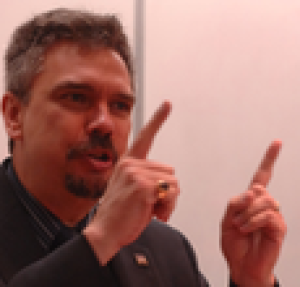
Since the start of the twentieth century, Christian religion scholars from the dominant culture - specifically ethicists – shifted their focus on how to live the Christian life via praxis toward the nature of ethics, wrestling more with abstract questions concerned with what is the common good and/or which virtues to cultivate. An attempt is made to understand the world, but lacking the ability to differentiate within disenfranchised communities between a “blink and a wink,” à la Geertz, their final analysis lacks gravitas. Teaching religion has become a process which [de]liberates not liberates. While abstract deliberations at times might prove sympathetic to the plight of the oppressed, the first casualty of abstract thought is rigorous academic discussions concerned with how to construct a more just social structure based on faith claims. A move to the abstract has, as my dissertation chair John Raines constantly reminded me, made the [class]room an appropriate name which signifies what occurs. This “room of class” becomes a space where students learn the class to which they belong, and how to assume the responsibilities associated with that class. During a visit to Yale, a student reminded me that while most seminaries train ministers for churches, Yale trains future bishops and superintendents. I doubt if such an attitude is limited to just one of the Ivies. Those with sufficient capital or connections to attend certain “rooms of class” on prestigious campuses are afforded opportunities normally denied to others (predominately students of color) who attend rooms at less prestigious locations. To occupy [class]rooms attached to power and privilege means that what is taught focuses more on the abstract as opposed to praxis designed to subvert power and privilege. To some degree, most eurocentric approaches to pedagogy at prestigious [class]rooms, more often than not, focus on explaining what is religious. But for those rooted in (or in solidarity with) disenfranchised communities relegated to the underside of prestigious [class]rooms, the question is not so much to determine some abstract understanding of religion, but rather, in the face of dehumanizing oppressive structures, to determine how people of faith adapt their actions to serve the least among us. Some professors who embrace a more liberative approach to pedagogy recognize there is no such thing as a neutral education system. Rather, students, depending on the [class]room they attend, are either conditioned to domesticate or be domesticated. A theological education serves to normalize and legitimize existing power structures within the faith community and society. A liberative pedagogy instead seeks to cultivate the student’s ability to find their own voice by creating an environment where collective and individual consciousness can be raised. The starting point is not some truth based on church doctrine or rational deliberation. Instead, the starting point is analyzing the situation faced by the dispossessed of our world and then reflecting with them theoretically, theologically, and hermeneutically to draw pastoral conclusion for actions to be taken. To function in the [class]room as a scholar-activist is usually to be dismissed, especially if one chooses not to engage in the methodologies acceptable to eurocentric thought. A division, unfortunately, exists where those concerned with the importance of maintaining their privileged space in [class]rooms oozing with power insist on lessons revolving around the thoughts and ideas of mainly dead white scholars (and those soon to join them) dismissing scholar-activist and the scholars from marginalized communities who inform their own thoughts. Simply peruse the reading lists on syllabi at prestigious [class]rooms to notice how scholars from disenfranchised communities are ignored – except, of course for that one elective class offered to check off the political correctness box. The [class]room space is protected with a call not to engage in the politics of our society, but instead to limit our thoughts to the polity that is the church, usually a homogenous church which more often than not misses the mark. The calling to be a scholar-activist is a recognition that by seeking solidarity with the stone rejected by stale builders regurgitating dead thoughts incapable of saving anyone, one finds themselves among the cornerstone of relevant, cutting-edge scholarship capable of revolutionizing society, literally turning the world upside-down.
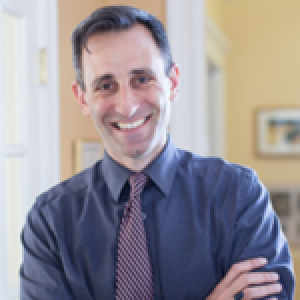
I help people have difficult conversations for a living. I facilitate dialogues–usually in communities deeply divided over issues that touch on people’s values and worldviews. I have spent much of the last three years working with professors as their classrooms increasingly fit that description. In Jill's terms, I help people wobble, but not fall down. Jill talks about wobble in terms of letting something happen and getting out of the way. That is a piece of it for sure, but there is a choreography to wobble, a delicate but purposeful crafting of space, time, language, movement, and furniture that makes wobble possible. The purpose is to break people out of the conversations that hold us back from seeing complexity in ourselves and others. It is meant to crack the surface conversation to reveal new possibilities, to deepen understandings of values and lived experience, and to unmask our own assumptions. I call it “choreography” because every choice we make while facilitating a conversation invites some responses and discourages others. And every choice we make leads people to focus either on us or on each other. If we call on people, it invites people to raise their hands and wait for us to conduct. If we don’t, it invites people to give and yield focus as they move in and out of the conversational space. It is choreography at its most subtle. If we ask people to sit quietly and reflect for two minutes before answering, we invite the second and third thought that someone has, not just the first. The work of dialogue is disruptive of old patterns. It disrupts dynamics of dominant voices monopolizing the space–including ours. It weakens the power of the first speaker. It breaks the pattern of asking questions we already know the answer to while our students try to read our minds. It invites silence as a space of intention and reflection rather than of fear and disengagement. It invites empathy rather than judgement. It prompts uncertainty rather than certainty and curiosity rather than declamation. It allows for wobble rather than steady motion along the straight and narrow. When I visited Jill’s class, I stood up and talked about dialogue in front of rows of chairs, with people raising their hands and I called on them–ironic. It was a fine conversation. But when I sat down to watch the rest of the class, Jill didn’t just allow or encourage wobble, she choreographed it. Jill asked the students to move the chairs into pairs of arcs facing each other. A wobble happened. Then Jill sat outside the circle. Another wobble. Outside the circle is one of those places that disrupts the old pattern, a place of intellectual humility. It disrupts the pattern of students relying on us for the prompt, the answer, the nod of approval. Then she asked a question she didn’t know the answer to. Wobble. She gave people a chance to reflect before speaking. Wobble. This is not just allowing something to happen; these are a set of choices we make–a choreography that when done right makes possible a new kind of conversation that breaks the dominant polarized and divisive rhetoric or silencing that we see so often in our discourse. What happens when we choreograph wobble is that students rise to their own power and possibility, and move through their own wobbling moments to muster the momentum to move together. In Jill’s class, the conversation had to be interrupted after 40 minutes to announce something about papers, but it would have gone on. Even if Jill and I had quietly snuck out of the room, it would have gone on because the students had turned toward each other and engaged. Whether we recognize it or not, much of our public discourse is designed for simple, polarizing, escalating episodes of attacking and defending well-worn positions. We have opportunities to design and incubate a new discourse, one designed for the generation of ideas, the exploration of new ground, the contemplation of complexity. The patterns we have to break are strong and so our choices must reflect that. Our choreography must reflect the need of this moment; the need to turn to one another with curiosity, complexity, and care.
[row] [column lg="12" md="12" sm="12" xs="12" ] [su_heading]This information is for participants already accepted into the workshop.[/su_heading] [/column] [/row] [row] [column lg="4" md="4" sm="12" xs="12" ] [su_button url=" http://live-wabash.pantheonsite.io/programs/workshops/early-career-workshop-2/ " background="#86b53e" size="3" wide="yes" center="yes" radius="5" text_shadow="0px 0px 0px #FFF" desc="Participants, Other Dates, etc..."]View Info About This Workshop[/su_button] [/column] [column lg="4" md="4" sm="12" xs="12" ] [su_button url=" http://live-wabash.pantheonsite.io/programs/workshops-home/travel-and-accommodations-2/" background="#86b53e" size="3" wide="yes" center="yes" radius="5" text_shadow="0px 0px 0px #FFF" desc="Flights, Lodging, Directions, etc..."]Info on Food, Travel and Accommodations[/su_button] [/column] [column lg="4" md="4" sm="12" xs="12" ] [su_button url="http://live-wabash.pantheonsite.io/programs/workshops-home/policy-on-full-participation/" background="#86b53e" size="3" wide="yes" center="yes" radius="5" text_shadow="0px 0px 0px #FFF" desc="Attendance, Guests, Dependent Children, etc..."]View Our Policy on Full Participation[/su_button] [/column] [/row] [row] [column lg="12" md="12" sm="12" xs="12" ] Ground Transportation About a week prior to your travel you will receive an email from Trish Overpeck (overpecp@wabash.edu) with airport shuttle information (pdf). This email includes the cell phone number of your driver, where to meet, and fellow participants with arrival times. Please print off these instructions and carry them with you. [/column] [/row]
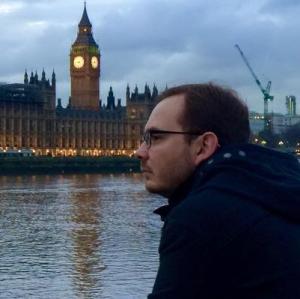
Daniel Madigan, my mentor when I first began teaching Islamic studies, considers his introductory course an opportunity to help students understand Islam as a religious choice and vision. This, in contrast to a politicized framework wherein Islam, is a problem to be solved. Marshall Hodgson also refers to the vision of Islam early in volume one of his series, The Venture of Islam. He writes, “Islamicate society represents, in part, one of the most thoroughgoing attempts in history to build a world-wide human community as if from scratch on the basis of an explicitly worked out ideal.” In an earlier blog post, I recommended the use of graphic novels and comics in teaching Islam because they are substantive and because students benefit from the engagement with visually rich, multimodal texts. Courses in religious studies have an unfortunate tendency toward abstraction. Separating ideas from their cultural expression is a disservice to our students and Islamic or Islamicate culture itself, which represents the “highest creative aspirations and achievements of millions of people;” Hodgson again. If we are to help students appreciate a vision, we must show them how that vision is lived, and the cultural heritage it has built over the centuries. In this post, I want to highlight some of the online resources available through museum websites, particularly the website of The Metropolitan Museum of Art in New York, and provide ideas for how these tools could be used in the classroom. In conjunction with a virtual exploration, it would be ideal to send or accompany students on a museum visit but this is not always practicable. Fortunately, museums are committed to education and the advancement of knowledge in their mission statements and their online resources are often exemplary for that purpose. Teaching is sometimes isolating because it can be accomplished in isolation. A busy professor can close off the classroom and get through the term without doing the work of engaging outside institutions. But to do this job right, we need partners whose missions intersect with our own. In my experience, museum professionals are eager to help and they have created a wealth of resources to draw from. A small investment of time spent researching museum offerings or reaching out to a museum education office can pay huge dividends in terms of student learning and engagement. In fact, a more student-driven classroom can save time in the long run. Letting students take charge of their own learning means they are doing more of the work. Anyone who has visited The Metropolitan Museum of Art knows it is an overwhelming experience. Thanks to a sense of direction that allows me to get lost in my own neighborhood, I have spent the better part of an hour just trying to find my way to the right wing in the Met. Their website can provoke a similar experience. It requires a certain amount of detective work to identify the right online resource for your students and a significant amount of scaffolding to guide them to its best use. But there are unique opportunities to be found! Five decades of Met publications are available to search and download, sometimes in their entirety, for free. This collection includes a full online copy of Art of the Islamic World: A Resource for Educators that pairs well with an online lesson plan on “Arabic Script and the Art of Calligraphy” suitable for modified use in the college classroom. The Met website is also home to 82nd & Fifth, a series of two-minute videos in which curators discuss works of art that changed the way they see the world. These videos, including an engaging presentation on the official signature of Süleiman the Magnificent, are also available as part of a YouTube playlist. Projects like this provide useful modeling for classroom activities. A student can be tasked with exploring Islamic art and creating their own short video on how it has changed the way they view the world. The most powerful resource on the Met website is the ability to search its collection as a whole. Students searching for “Islam” will bring up thousands of entries, including photographs, historical information, and links to related objects and textbooks as available. This is a fantastic opportunity but it must be used wisely. Casting students into this sea of information without a clear purpose is not likely to be successful. As a colleague once instructed me, “Throwing everything against the wall to see what sticks is not a sound pedagogical strategy.” Certainly, the Met collection can inform garden-variety research papers and projects begun in the classroom but it can also provide an initial inspiration for detective work. Students might start with an item from the collection and generate questions based on its features and provenance. Finding an elaborate illustration of a drunken party from the Diwan of Hafiz, students may wonder about the relationship between intoxication and mysticism. Confronted with a folio from the Blue Qur’an, they might want to know more about the aesthetic and practical features of other Qur’anic manuscripts. The key is that students are puzzling over museum objects and formulating their own paths of inquiry leading to a more holistic understanding of Islam. Advancing toward the highest, creative and comprehensive level of Bloom’s Taxonomy, you could ask students to curate their own virtual exhibition using an online collection. Seeking out meaningful threads of continuity between temporally and geographically disparate objects is an enormously challenging task but the rewards for a job well done are great as well. Such an assignment, carefully wrought, has the potential to help students consider the vision of Islam as it was realized in material culture; not in abstraction, but as a source of creative renewal and inspiration across time and space.
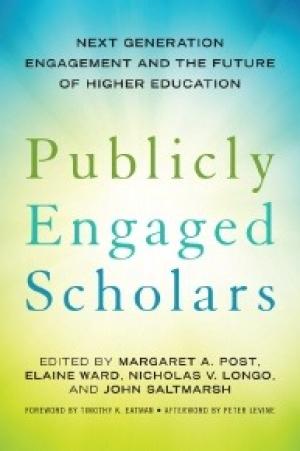
Preparing citizens through education is not a novel idea. Its origins lie in Greco-Roman approaches to the task, and in American history the goal of educating the citizenry can be traced back to Charles Sanders Peirce (1839-1914), William James (1842-1910), and John Dewey (1859-1952). Dewey, who was perhaps the most articulate about the implications of pragmatism for education, saw academic preparation for life in a democracy and the moral education of children as part of the same endeavor. The contributors to this volume acknowledge Dewey’s role in this enterprise, but do not explicitly explain why these essays represent the “next generation” of educators inspired by his vision. The best explanation, perhaps, is that they emphasize academic advocacy, as opposed to broader social wellbeing; engagement with society over preparation for engagement with society; and social location over citizenship as a point of departure for academic work. With that set of assumptions in mind, it is easier to discern the larger purpose of the sixteen essays in this volume which include an introduction and afterward, along with chapters devoted to three subject areas: (1) “The Collaborative Engagement Paradigm”; (2) the work of “New Public Scholars”; and (3) thoughts on “The Future of Engagement.” The vast majority of the contributors to this volume are specialists in education and programs in community engagement, and there are individual writers from the disciplines of art and political science. For that reason, some seminarians and seminary faculty will find more immediate points of contact with their work than others. Both groups will also find themselves asking – if education driven by engagement is appealing or necessary – whether the more natural point of contact for seminaries is the community, the church, or both. A critical evaluation of the essays will also raise other questions to which there are no simple answers: What is the place of “social relevancy and public legitimacy” in shaping the curriculum of higher education (1)? Can engagement as a model for learning set aside more abstract, disciplinary concerns (17)? What role has commodification played in shaping higher education and is learning through engagement immune to commodification (24)? To what degree do faculty members remain accountable to the disciplines that they represent when using engagement as a model for teaching and, if so, how is that accountability achieved? The answers to those questions will all look potentially different in theological schools and seminaries where faculty regularly grapple with the relationship between the work that they do and the needs of the church. Indeed, that realization may point to the most important question that the subject matter, but not the book itself, raises for theological educators: What does it mean for seminaries to engage the church “as reciprocal partners and coeducators” (5)? Answering that question is one that everyone who cares about theological education would do well to answer.
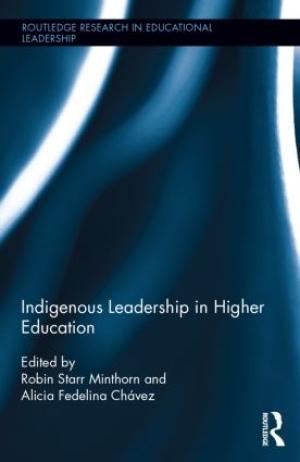
Excellence is seldom achieved alone. These words express one of the major themes of Indigenous Leadership in Higher Education, edited by Robin Starr Minthorn and Alicia Fedelina Chávez. Consisting of autobiographical narratives, the editors and contributors weave a blanket of experiences and guiding principles which illustrate and encourage the involvement of Indigenous leaders throughout the academy. Many of the narratives begin in the traditional manner with the authors situating themselves within their maternal and paternal lines, recognizing the interconnectedness of the present to the past in order to lead future generations well. That sense of community permeates the various narratives, weaving a thread into the blanket of colors that blends the experiences and insights into what constitutes Indigenous leadership. This blend of narratives is most evident in the second and the final chapters, in which the editors succinctly gather individual contributors’ words and correlate them to particular themes that serve as a wheel of knowledge in chapter two and summarize potential methods for incorporation into higher education in the final chapter. In chapter two, “Collected Insights,” the editors provide a wheel of four major components of what constitutes Indigenous leadership. The last chapter highlights approaches and philosophies, strategies, academics, and means of working with students to promote and encourage leadership for Indigenous peoples. While it may be tempting to read just these two chapters because of the breadth contained therein, the narratives themselves expand on one or more of the dimensions discussed in these two chapters. One of the major themes is that Indigenous leadership is communal rather than a solo endeavor; Bryan McKinley Jones Brayboy writes that “Indigenous leadership requires individuals to see themselves as part of a unified whole” (53). In chapter two, the editors provide other examples that demonstrate the importance of connection to the community through its elders and the people for whom one serves. Even though most of the narratives are directed toward Indigenous leadership in higher education, many of the principles can be applied to all persons in the academy. The narratives help educators rethink how to provide opportunities for all students to grow in wholeness and wisdom, not just knowledge of facts. Among the qualities the editors describe as “what we strive to embody,” (17) qualities that may resonate with all Indigenous persons, for me, one is clearly lacking. As a Native Hawaiian, I would include gratefulness. While this quality may be imbedded in the concepts of generosity, humility with confidence, and spirituality, I found few expressions of gratitude within the narratives. This disconcerted me because it is inconsistent with what I learned from my kupuna, my Elders. I would hope that, while this embodiment is not expressly evident in the narratives, it is part of their respect for the Elders who have wrapped them in the blankets of experience and provided them with the warmth that enabled them to be Indigenous leaders.
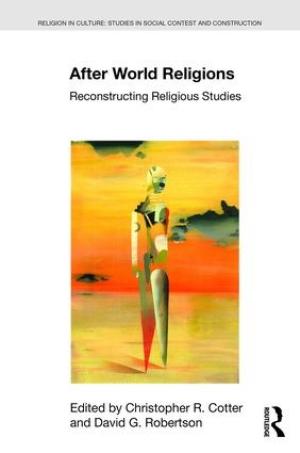
Professors of religion and religious studies may find a familiar link between this edited volume and aspects of their personal academic journey, especially if they are on the tenure track. Both represent texts that involve self-reflection and can embody intellectual wrestling. Most significant for this review: the former also offers tools for rethinking the World Religions Paradigm (WRP) that can challenge pedagogical strategies considered the norm of today and tomorrow. After World Religions: Reconstructing Religious Studies represents a methodologically rigorous way to create a classroom that cements the study of religion as an integral component of both undergraduate and graduate study. The twelve chapters in the volume – spread across three sections – are individually and collectively thought-provoking and intriguing essays. While I acquired the text for potential course adoption in my liberal arts undergraduate methods course, my engagement with the international cast of scholars (from the UK, Australia, Canada, Finland, and the U.S.) confirmed the importance of this work for professors of what might still be considered “world religions” as we strive to help our students “make sense of our world” (186). One of the more teachable moments was delivered by Teemu Taira. In “Doing things with ‘religion,’” Taira sets out to “instigate an exploration of how something came to be understood and classified as ‘religion’ and why,” as it simultaneously questions the inclusion and exclusion of traditions such as Confucianism, Shintoism, and Scientology (84). For example, the formation of Confucianism as a religion is connected with Western scholarship. Yet it “was regarded as a religion in China in 1949,” until the Communists took power in China when they “established the current system in which only Buddhism, Daoism, Catholicism, Protestantism, and Islam are considered as religions” (86, 85). Michel Desjardins provides another significant moment of illumination with “The Desjardins Diet for World Religions Paradigm Loss.” In a post-presidential-election season during which many Americans are threatening to emigrate to Canada, it seemed apropos to gain new insight from a classroom on our shared northern borders. It was easy to be hooked by the chapter’s focus on food and religion as the sole doorway to an introduction to religion seminar. Not only does Desjardins employ his own qualitative research, but he also challenges readers to reimage food – and, thereby, create “more nuanced views of religion” – “as a rich site for examining human nature” (124, 123). Additionally, useful resources are either embedded within the chapters (such as difficult to locate work on Sikhism) or as part of the references with which each ends. The “Afterward” by Russell McCutcheon, a stalwart in the field, concludes the work with a compelling goal: “If what we’re teaching these diverse students in our World Religions courses is not just the names and dates that these students are probably focused on, but, instead, subtly demonstrating to them how scholarship happens,” then we are more likely to teach skills “that are useful in unanticipated settings.” Who among us doesn’t yearn to accomplish that!
The Wabash Center's international peer reviewed journal becomes available online on January 3, 2017. The journal is published quarterly by Wiley-Blackwell. Online and print subscriptions available. The January issue is available for free download throughout the calendar year. Read more about the journal (including links to free content).
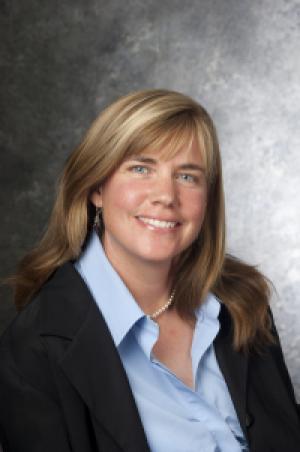
I am a cyclist. I ride a hybrid commuter bike to work most days and have a road bike that has taken me up mountain passes and on to country roads outside of Dallas where views of fields and livestock replace the asphalt jungles of the Metroplex. I picked up cycling almost a decade ago when it became clear that I needed some kind of response to the combined stresses of pre-tenure professional life and young children at home. I got on the bike for outside time, physical challenge, and personal space. I’ve stayed on the bike for all of these reasons, and also for what time on the bike has taught me about attentiveness, mindfulness, thinking spaces, and more recently, about wobble: those moments when things slow down, or haven’t quite started up; when direction, volition, and commitment are in play. In cycling, wobble happens when mounting, dismounting or moving slower than 2 miles per hour, often during a turn. As things go, this is also when it happens in classrooms. When conversations aren’t strictly guided, when listening replaces lecture, when a set authority structure is open to flux, intellectual patterns can come a little out of balance and preconceived ideas can change. Put another way, transformative learning can occur. Without the wobble, feet firmly on the ground, we can never get on the bike and ride. My interest in wobble stems from some conversations about diversity and intellectual humility I’ve been having with colleagues from various places and disciplines, and also from a recent workshop for faculty and graduate students here at Southern Methodist University on conflict and conversation in religious studies classroom spaces (thanks to Wabash for funding this with a small grant). The workshop focused on understanding why contentious issues can be difficult to talk about, and also offered concrete methods for facilitating useful conversations across difference. John Sarrouf, an experienced facilitator and Director of Strategic Partnerships at Essential Partners, led that workshop for us. John was also kind enough to come and speak to my undergraduate class about the work he does. It was in that encounter that I saw wobble in action. John greeted the class and then asked if they were talking about the upcoming presidential election. My otherwise talkative, engaged, and engaging students shrunk at the very suggestion. Shoulders hunched, faces turned to their desks, they shook their heads. They were thrown off balance, visibly uncomfortable, almost at a standstill. Then, John asked what it would take to be able to have those conversations. Under what conditions could they speak? Their heads came up, they made thoughtful suggestions, and by the end of John’s 10 minute time, they had recalled productive discussions around Black Lives Matter, religious differences, and their experiences in our class. They had turned an intellectual corner and were up and riding (thinking) again. In an online discussion post that followed, one student mentioned a change in his thinking in response to a suggestion John made about talking to understand rather than to persuade. Something in the wobble allowed him to hear, consider, and embrace a suggestion. He learned something. As in mounting and dismounting a bicycle, the wobble needs to be controlled. Too much and forward momentum turns into a crash, too little and we never get that second foot off the ground. Now that I am attentive to wobble, though, and have learned to use it by letting silence happen in discussions — by getting mindfully out of the way, or by not shying away from controversy when it arises — I have come to recognize its real potential. Or more accurately, I can see it for what it is. Before I saw discomfort or disengagement, things I wanted to minimize. Now I am more likely to see the beginning of forward momentum. I see the beginning of transformative, interesting thought, even around topics as challenging as religion. I hope my students can see the same.
Wabash Center Staff Contact
Sarah Farmer, Ph.D
Associate Director
Wabash Center
farmers@wabash.edu